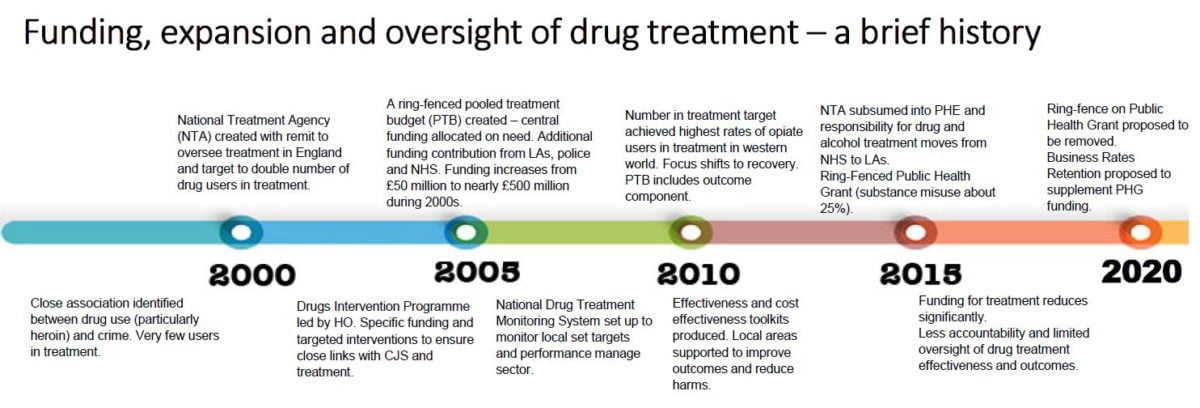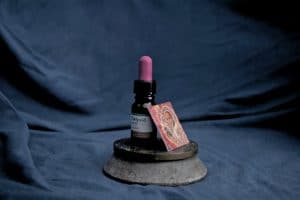Drug treatment and recovery
This is the eighth in a series of posts based on perhaps the most important drug-related report of the current century, Dame Carol Black’s Review of Drugs. Today’s post looks at the section from that report dedicated to drug treatment and the factors associated with recovery.
The section starts with a helpful infographic summarising the history of the funding, expansion and oversight of drug treatment in the last 20 years, which is reproduced below.
Funding cuts
The report immediately switches to look at the recent big cuts into treatment, highlighting the significant growth in the levels of unmet need:
- Overall funding for treatment has fallen by 17% (it is not possible to disaggregate accurately between alcohol and drug treatment spend due to lack of robustness in reported expenditure data)
- Many local authorities will have reduced drug and alcohol expenditure by far larger amounts, with residential services being particularly hard hit
- Some areas are already ‘rationing’ treatment by setting higher thresholds for being able to access structured care
- With drug users who would have received treatment previously being diverted into less intensive and potentially less evidence based interventions
- Likely many areas are now offering the bare minimum service with large increases in worker caseloads an inevitability
- The overall numbers in treatment have fallen at a similar rate as funding with the largest decreases seen in opiate users (and those in treatment for alcohol only)
- As both funding and numbers in treatment have fallen the cost per person has remained relatively stable over time
- With the prevalence of opiate and crack use increasing and number of opiate users in treatment falling, the levels of unmet need (those that need treatment not getting it) has increased.
Factors associated with recovery
The rest of the section looks in detail at a wide-ranging issues including a profile of opiate and non-opiate users in treatments; factors impacting on recovery rates for opiate users; the complex needs of people in treatment with specific attention paid to mental health, homelessness, and involvement in the criminal justice system.
There is a useful table which shows the proportion of different crime types which are estimated to be associated with drug use/users (see below). The report also notes that referrals from the trimmer justice system fallen substantially, protective crack users, since central disinvestment in the Drugs Intervention Programme.
Summary
- Expenditure on drug treatment has fallen since 2013/14 along with similar falls in the numbers in drug treatment during this time, against a backdrop of increases in the prevalence of problematic drug use.
- The unit cost per person has remained relatively stable over this time so cost effectiveness has not improved.
- Some areas are starting to ‘ration’ treatment, setting higher thresholds for those who can access it and/or just offering a minimum service due to workers having such large caseloads.
- The number of residential rehabilitation services have reduced significantly, removing a core treatment component for those that need it to support their recovery.
- Recovery is much wider than just substance use treatment with many drug users having multiple complex needs in terms of health (both physical and mental), employment, homelessness and offending.
- Referrals from the criminal justice system have fallen significantly over the last six years and only about a third of people requiring drug treatment following prison treatment go on to receive it.
- Many key indicators (deaths, unmet need, recovery rates) are going in the wrong direction and there is significant variation in both local spend in relation to need and the achievement of recovery and other outcomes.
- There is significant local variation, but outcomes tend to be worse in the north of the country and particularly in the North East, often these areas have higher rates of opiate and crack use and higher rates of drug related mortality.
- Levels of rough sleeping are rising, prevalence in the population is increasing: need is not being met and the problem is worsening with the levels of mortality at the highest since records began.
- The Individual Placement and Support trial is showing very promising early success in finding employment for people in drug and alcohol treatment.










